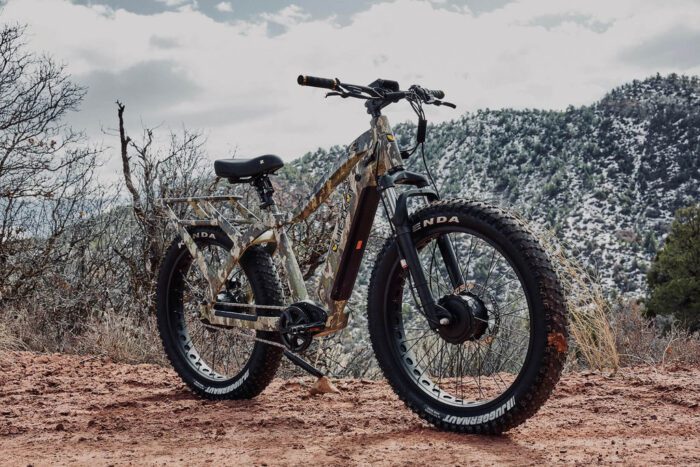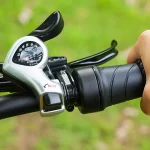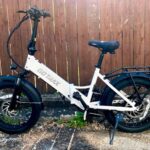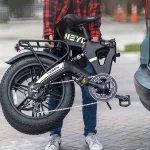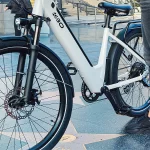If you love adventure and the great outdoors, an electric bike (e-bike) can open up new possibilities for off-road exploration. With pedal assist and a powerful motor, e-bikes make it easier to traverse challenging terrain, climb steep hills, and go farther into the backcountry. In this article we talk about How to Choose the Best Electric Bike for Off-Road Adventures In 2024.
However, not all e-bikes are created equal when it comes to rugged performance. Certain features and specifications make some models better suited for off-road use than others. Here’s what to consider when shopping for the best electric mountain bike or trail bike:
Table of Contents
Frame Material
The frame is the foundation of an e-bike. For off-road riding, an aluminum alloy or carbon fiber frame is best. Steel is durable but heavier. The frame geometry should also be optimized for stability and traction on uneven ground. Generally, the best off-road e-bikes have slightly slack headtube angles, longer wheelbases, and lower bottom bracket heights.
Suspension
Dual suspension with front fork and rear shock absorbers is vital for smoothing out bumps, increasing control, and improving traction in dirty or rocky conditions. The suspension travel should be 150-180mm or more to handle big hits. Air springs are lighter than coils and offer more adjustability. The dampers should be high quality to resist fading.
Motor Power
More power equals more traction and ability to climb over obstacles. For aggressive trail riding, look for a mid-drive motor with at least 750 watts, like those from Bosch, Shimano, Brose, and Yamaha. Hub motors are lighter but lack low-end torque. Also make sure to get a large battery with 600+ Wh capacity for long distances.
Drivetrain
The best off-road e-bikes have durable drivetrains with 1x gearing, clutch rear derailleurs, and narrow-wide chainrings to minimize dropped chains over bumps. Many models now use 11 or 12-speeds for a wide gear range. Splined bottom brackets and crank arms add strength. Narrower q-factors improve pedaling ergonomics.
Tires
Fat treaded tires with widths up to 3 inches provide maximum traction and floatation in loose terrain. Plus-sized tires (2.6-3 inches) are also excellent. Regular mountain bike tires still work but narrower widths increase the chance of pinch flats and rim strikes. Tubeless-ready rims and tires allow lower air pressure without flats.
Brakes
Hydraulic disc brakes provide the best stopping power for steep, slick terrain. Look for large rotors (203mm+ front, 180mm+ rear) for superior heat dissipation. Metal pads last longer than resin. DOT fluid boasts a higher boiling point compared to mineral oil. Ventilated rotors combat overheating on long descents.
Cockpit & Controls
Choose an e-bike with handlebars, grips, saddle, and pedals suited to aggressive trail riding. The wider the handlebars the more leverage and control. Look for an upright riding position for maneuverability. Make sure the display/control unit is easy to operate with gloves. Consider a dropper seat post for getting behind the saddle on descents.
Weight
In general, the lighter the e-bike, the easier it will be to handle on the trail. But ultra-lightweight builds sacrifice durability. The best off-road e-bikes strike a balance and typically weigh 45-55 lbs. Heavier duty suspension, wheels, tires, and frames add weight but also boost strength for hard riding.
Water Protection
Water, mud, snow, etc. are part of most off-road adventures. Make sure any e-bike you choose has an IP65 or higher rating so the motor and electronics are protected against the elements. Some models also grease bearings and use drain holes in the frame to handle wet conditions.
Rider Profile
Before choosing an electric trail bike, honestly assess your height, weight, fitness level, riding experience, and style. Will you be navigating technical singletrack or just gravel roads and wide trails? Factor in whether you’ll carry gear and need mounting points. Getting the right e-bike for your abilities and needs is key for safety and enjoyment.
Budget
Quality electric mountain bikes range from about $2,500 up to $10,000. As the saying goes, you get what you pay for. In this price range the bikes have durable frames, robust motors and batteries, high-end suspension and components, and advanced features. If your budget is limited, you may need to compromise on power, range, or durability.
Test Rides
If possible, test ride different electric trail bikes before buying, even on pavement or mild trails. This gives you a feel for the motor response, handling, power delivery, ergonomics, shifting, braking, suspension action, and display/control usability. Demo events are a great way to compare models from various brands in one day.
Reputation & Reviews
Research the brand and model’s reputation through experts and customer reviews. Look at forums and Facebook groups to see what real owners say about reliability, performance, customer service, etc. Some lesser-known e-bike companies cut corners and quality suffers. Stick with proven brands that stand behind their products.
Local Laws & Regulations
Make sure any e-bike you purchase meets public land and trail regulations in your area. Some places prohibit electric bikes or limit them to certain types of trails. The Class system (Class 1, 2, and 3 in the US) determines rules based on motor power and assisted speed. Related factors are insurance and registration requirements.
Accessories & Upgrades
Consider which accessories would enhance your off-road adventures. Full-face helmets, goggles, lights, fenders, cargo racks, dropper posts, and clipless pedals are popular upgrades. You may also want multiple batteries for ultra-long distances. Aftermarket suspension components allow custom tuning. Over time you can upgrade wheels, drivetrains, brakes, etc.
Maintenance Needs
E-bikes have some unique maintenance needs. Check that local bike shops can service the model you choose. Learn what periodic service is required and what spare parts may wear out. Budget for new brake pads, chains, sprockets, tires, stanchions, etc. Consider toolkits and repair stand options too. Proper e-bike care prevents problems on the trail.
We hope these tips help you select the ultimate electric mountain bike, fat tire e-bike, or electric trail bike for your adventurous rides! Combining pedal power and electric assist opens new possibilities to traverse remote backcountry terrain. With a durable e-bike suited to aggressive riding, you can explore farther and faster, climb towering peaks, and shred gnarly downhill trails. Just remember to pick the right bike for your budget, riding style, and local trail regulations. Then get out and have fun going where no roads roam. I sincerely hope you find this “How to Choose the Best Electric Bike for Off-Road Adventures In 2024” article helpful.
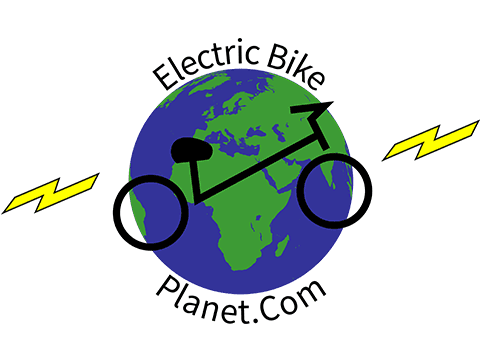
Captain Colyer is an expert in sustainable transportation with a Master’s degree in Environmental Engineering. With over 9 years of experience, he is dedicated to advancing eco-friendly commuting solutions. His work focuses on the latest advancements in electric bike technology and promoting sustainable living practices. At ElectricBikePlanet.com, Captain Colyer shares his in-depth knowledge and practical insights to help readers make informed decisions about electric bikes. Join them on their electric journey for the best e-bike advice and recommendations, and connect on Facebook, Pinterest, and Instagram.

